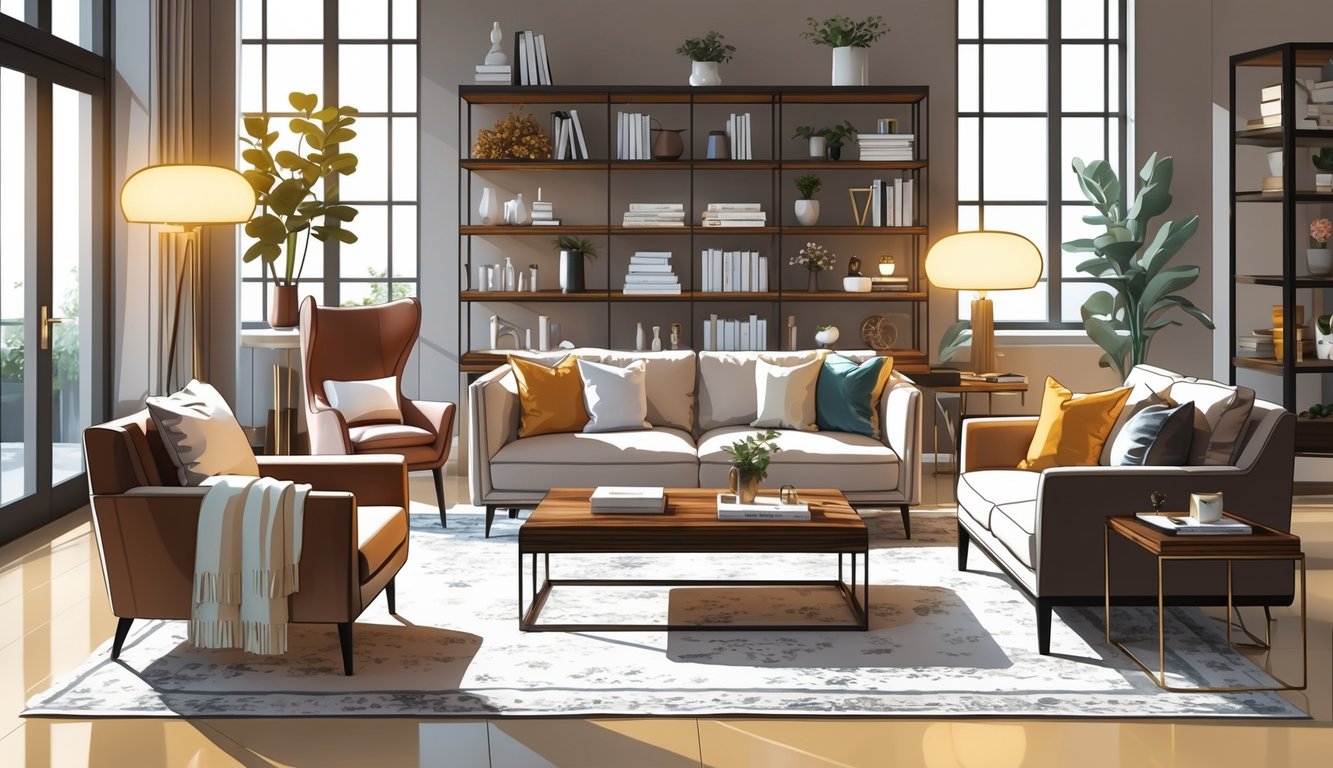
Importance of Craftsmanship
Not to brag, but I can spot a bad miter joint from across the room. You don’t need to be a woodworker, though—just look at the screws and how the pieces line up. Dovetails (the real, hand-cut kind) on drawers? Still the gold standard. I’ve seen so many “investment” pieces that start shedding trim or leaking glue after a few months. Walnut and maple from North America just feel different—cold, solid, not hollow when you knock on them.
Cherry wood changes color, which is weird but kind of cool if you want something that ages. Oak? Basically indestructible. You’ll never pass down particle board, even if it’s shiny. For painted furniture, I check for smooth finishes—if it’s bumpy or looks like an orange peel, someone rushed it. Mortise-and-tenon joints—yeah, it sounds fancy, but they actually keep furniture from getting wobbly. I once spent an afternoon watching a cabinetmaker fit dovetails by hand, and after that, flat-pack stuff just feels like a joke.
Here’s something nobody tells you: ask for a raw wood sample, rub two pieces together. If you get weird dust patterns, there’s probably filler or resin in there. Cushions again—if the company won’t show you a cross-section, it’s probably glued-together scraps.
Investment Pieces for Different Rooms
Regrets? Oh, plenty. Like the bedroom bench I bought because it looked cool—fell apart in a year. If you’re going to drop real money, get a solid hardwood bed frame (ash, walnut, cherry, whatever). It won’t wobble, even after you drag it across the room five times. Nightstands should be heavy, dovetailed, not some lightweight laminate. Living room? Full-grain leather club chairs beat those trendy boucle things—boucle’s everywhere now, but it won’t last.
Dining tables get brutalized. Cheap ones buckle if someone leans on them, but real maple or oak (quarter-sawn, if you can swing it) just take the hits. Kids? Veneer’s a nightmare—first crayon mark, it’s over. For offices, I pick steel-framed desks with hardwood tops. MDF? Falls apart after a couple of coffee spills.
Entryway storage—why does everyone cheap out here? I did, and I regret it. Solid wood shoe racks and coat stands last. The cheap stuff? Gone in months. Honestly, focus your money where things get used every day. Coffee tables? That’s not the place to gamble.
The Role of Functionality in Investment Furniture
Tripped over shoes again this morning—why do I never have enough storage? Maybe that’s why stylists always roll their eyes when someone buys a “statement” piece that holds nothing. Looks cool, sure, but try finding your keys in a pile of scarves at 7 a.m. Functionality matters way more than anyone admits.
Thoughtful Storage Solutions
I’ve lost count of how many times a “minimalist” bench with no drawer became a dumping ground. Closets alone never cut it. Ottomans with trays, credenzas that swallow board games, sectionals hiding bins—those are the real lifesavers. Every stylist I know says storage furniture saves more than just space; it saves your sanity.
Erin Gates told me straight up: if your coffee table can’t hide anything, you’ll just keep piling junk on top. A 2024 Houzz survey said 67% of people felt less cluttered after buying storage furniture (not open shelves, surprisingly). Modular bookshelves, beds with drawers—those are basics, not upgrades. Yet someone always wants to squeeze in another “sleek” chair instead.
Selecting for Storage Needs
Moving? Fun, until you realize you own four identical tables and none hide a single thing. Picking furniture for actual function is so obvious, but people still buy $3,000 bar carts that store nothing. Pantry cabinets work outside the kitchen, shoe cabinets hold more than shoes—nobody cares if you stash gloves with chargers.
Designers always ask clients to list storage headaches—shoes, paperwork, pet junk, pillows, whatever. Murphy beds with shelves might help, but a sculptural bench with zero storage? That’s just a stubbed toe waiting to happen. “Functionality” is a clunky word, but you’ll miss it if you ignore it.
Overlooked Elements That Make a Difference
What still drives me nuts? Missing the details. People obsess over sofas, but the tiny stuff—color, windows, insulation—gets ignored, then suddenly the whole room feels off and you can’t fix it with a new throw blanket.
Color Scheme Coordination
Biggest shock? Not how fast white walls get gross (although, yeah), but how mismatched colors can ruin a room. People pick paint under store lights, then wonder why it looks awful at home. I tried Pantone’s Peach Fuzz with navy—looked great online, weird in my living room. Color consultants say to balance colors in odd numbers, but who’s actually counting? Sarah Miller told me layering the same undertone in random stuff—rugs, vases, even the dog bed—works best. Big color moves only work if you commit and don’t go wild with too many shades. Pinterest never shows that part.
Choosing Window Treatments
Curtains. Ugh. I blew way too much on blackout panels that turned everything in my room greenish. NAWCP experts say most people pick curtains without thinking about light or texture. Roman shades? Only fit right if you pay for custom. Cellular shades? Great insulation, but they’re also dust magnets. And nothing ruins a room’s look faster than curtains that are too short or pool on the floor. Measure twice, buy twice—seriously, you’ll mess it up the first time.
Ignoring Energy Efficiency
Energy efficiency—so boring, but so expensive to ignore. Last summer, I skipped thermal curtains and didn’t bother with Low-E windows. My utility bill jumped 18% (thanks, DOE). That’s money I could’ve used on something less depressing. People act like insulation only matters in winter. Green Building Council folks swear by triple-glazed windows—payback’s five to seven years, maybe? My “energy-efficient” smart plugs did nothing. Should I have put foil behind the radiators? Grandma says yes.